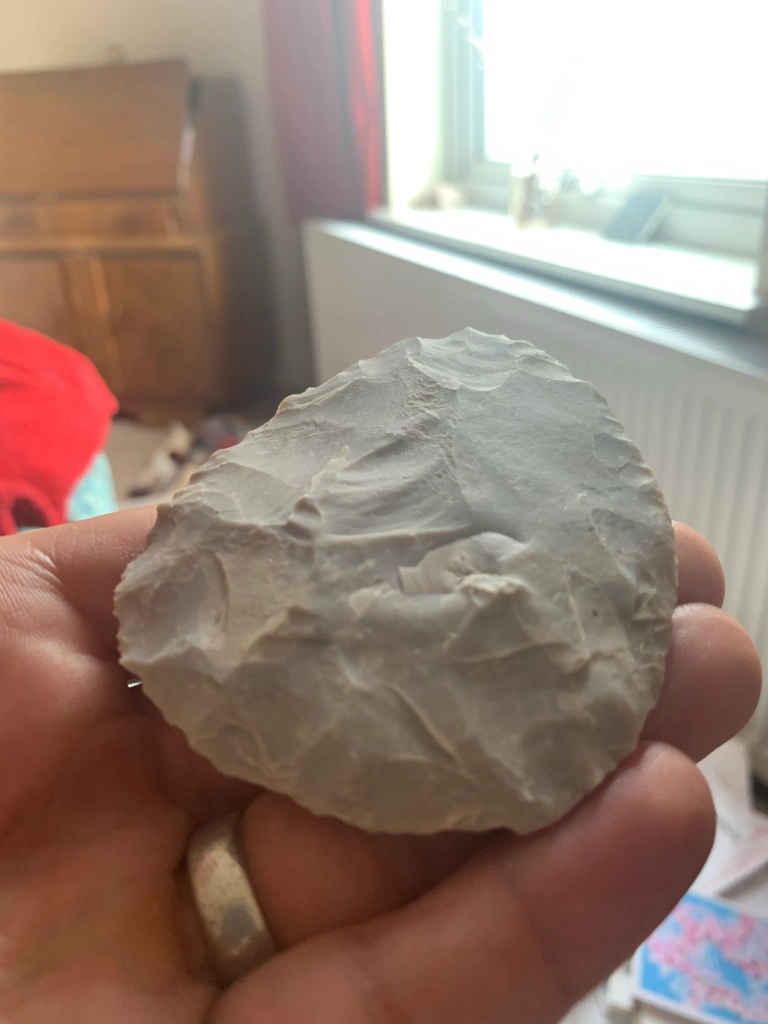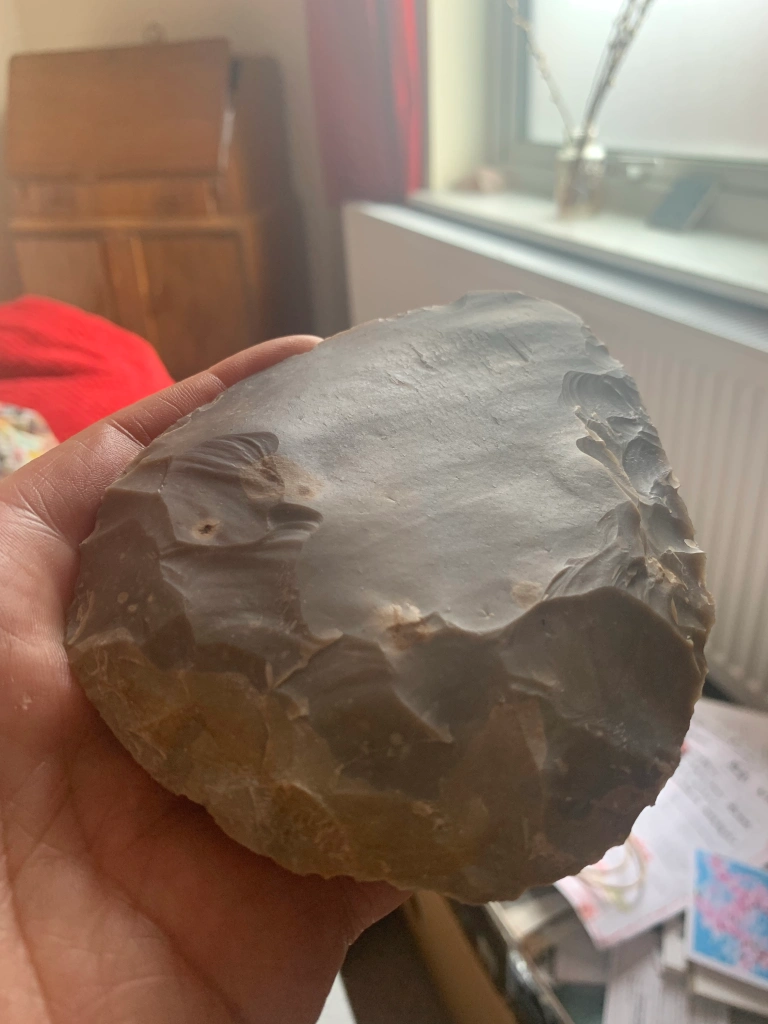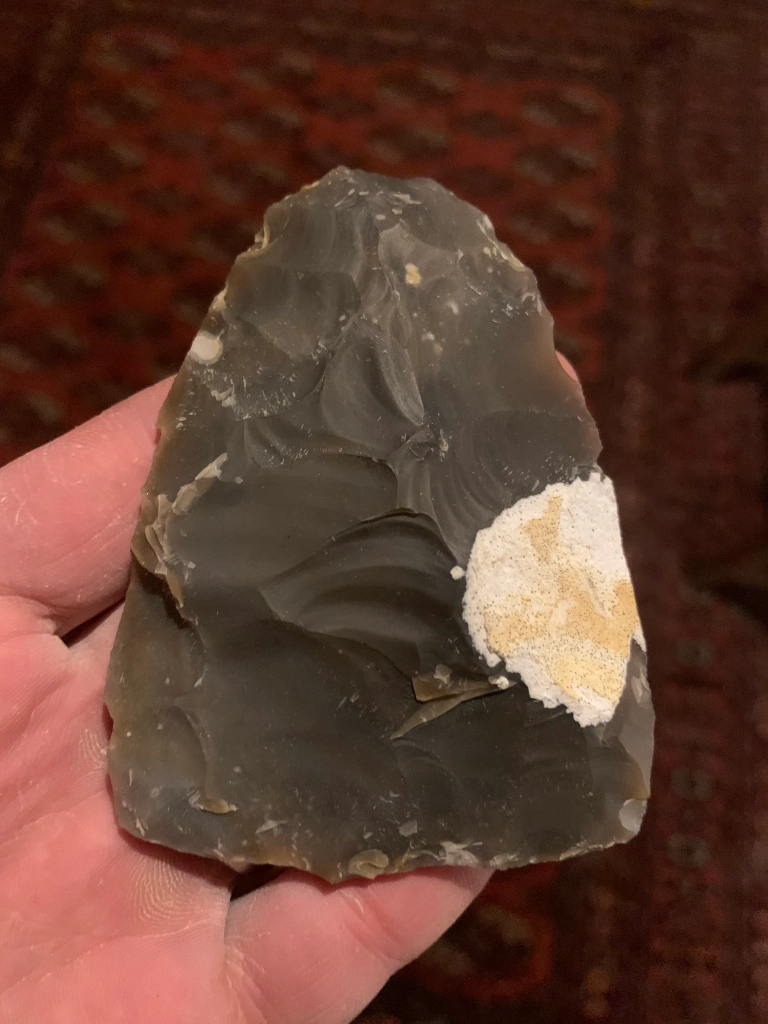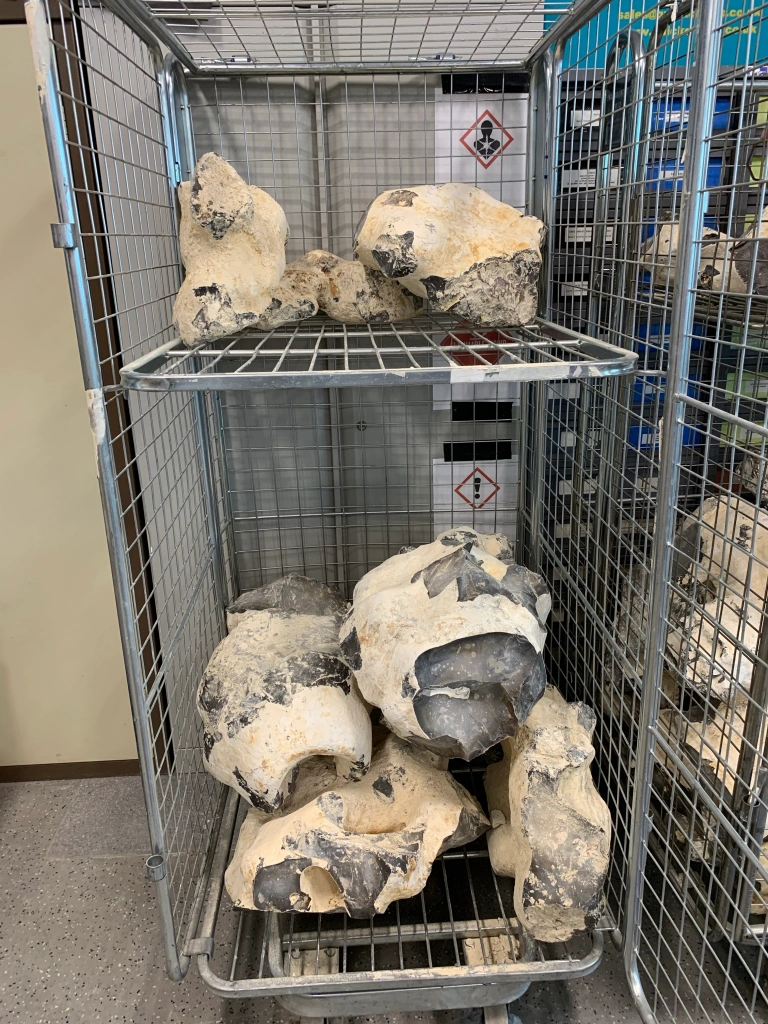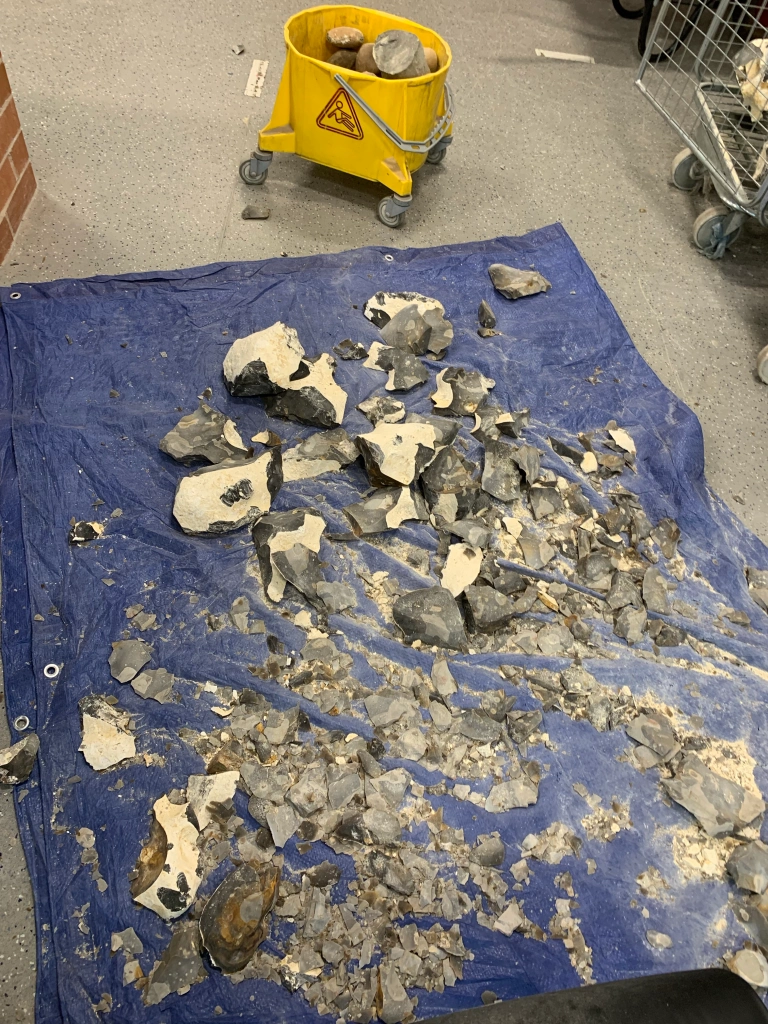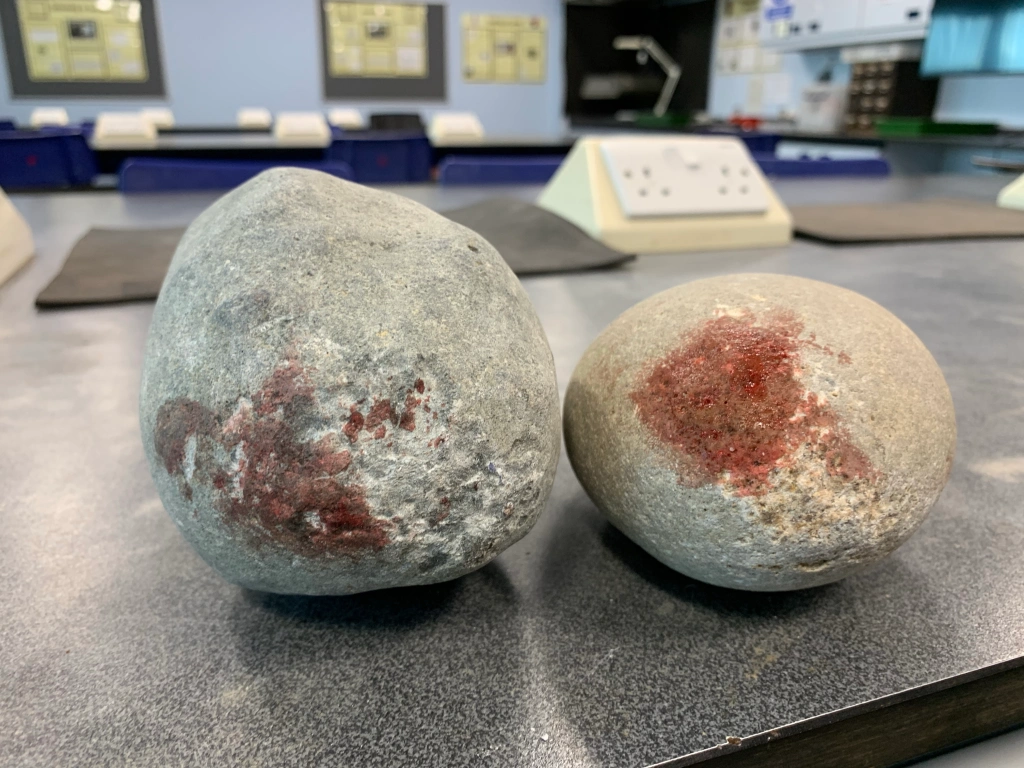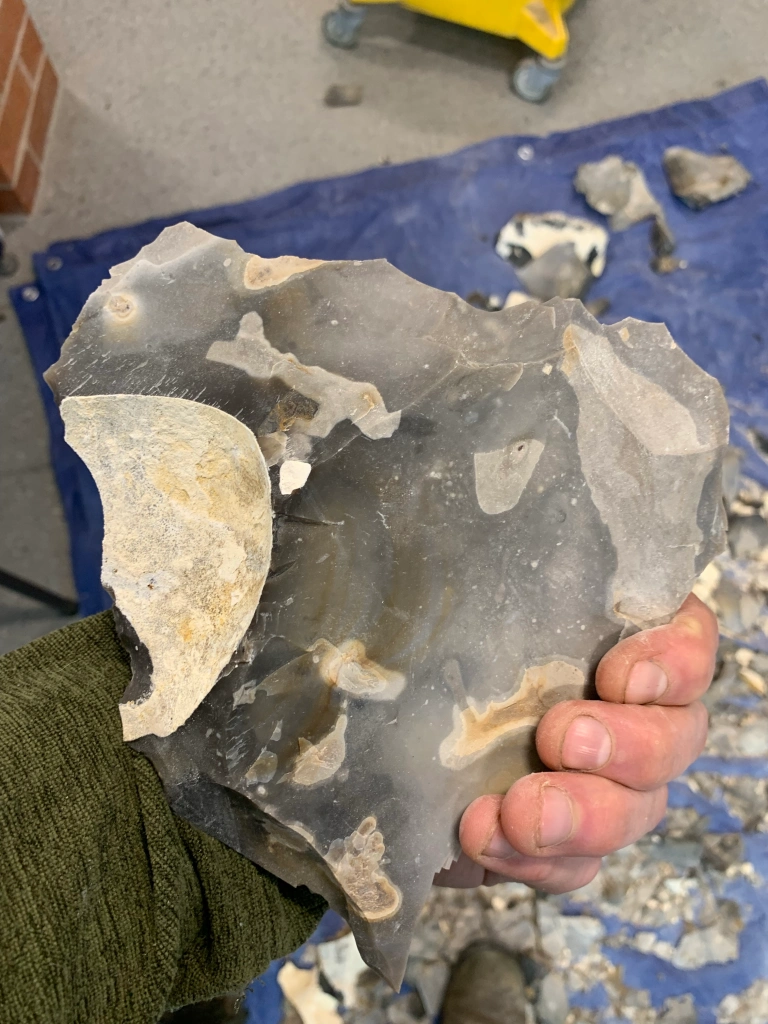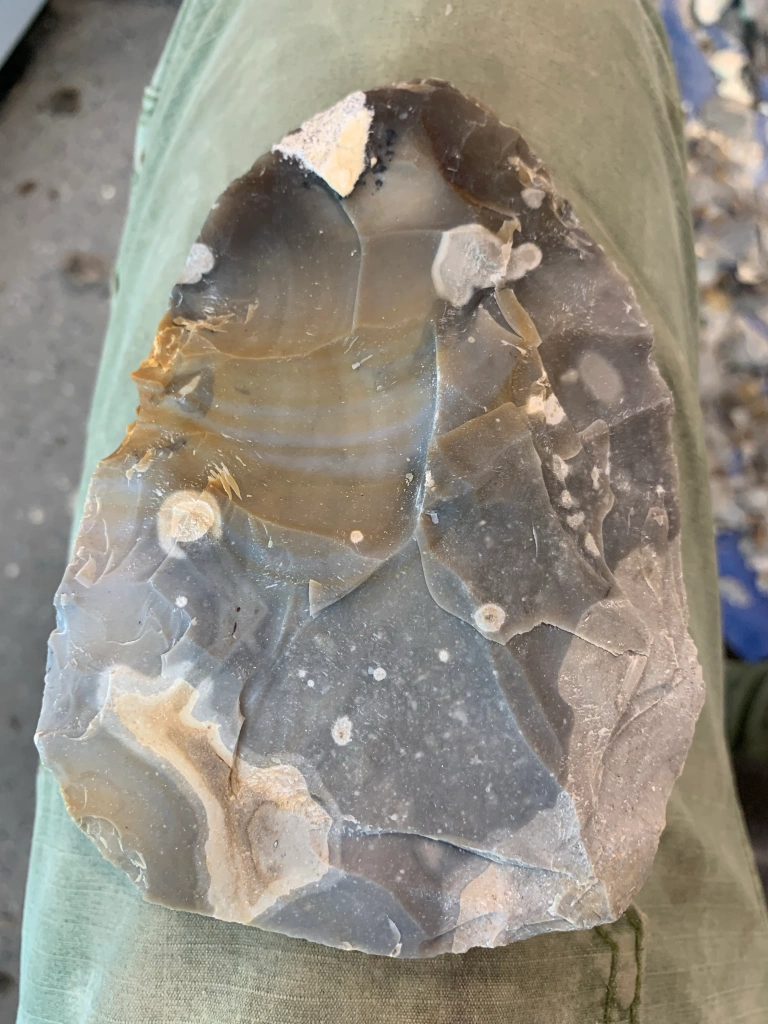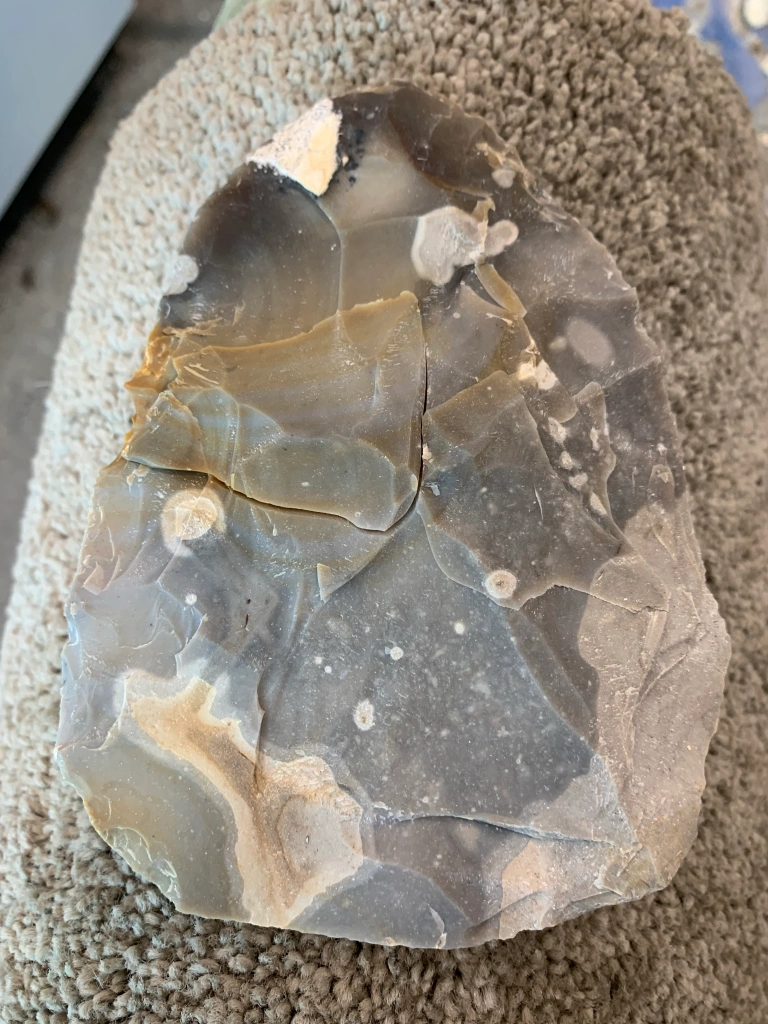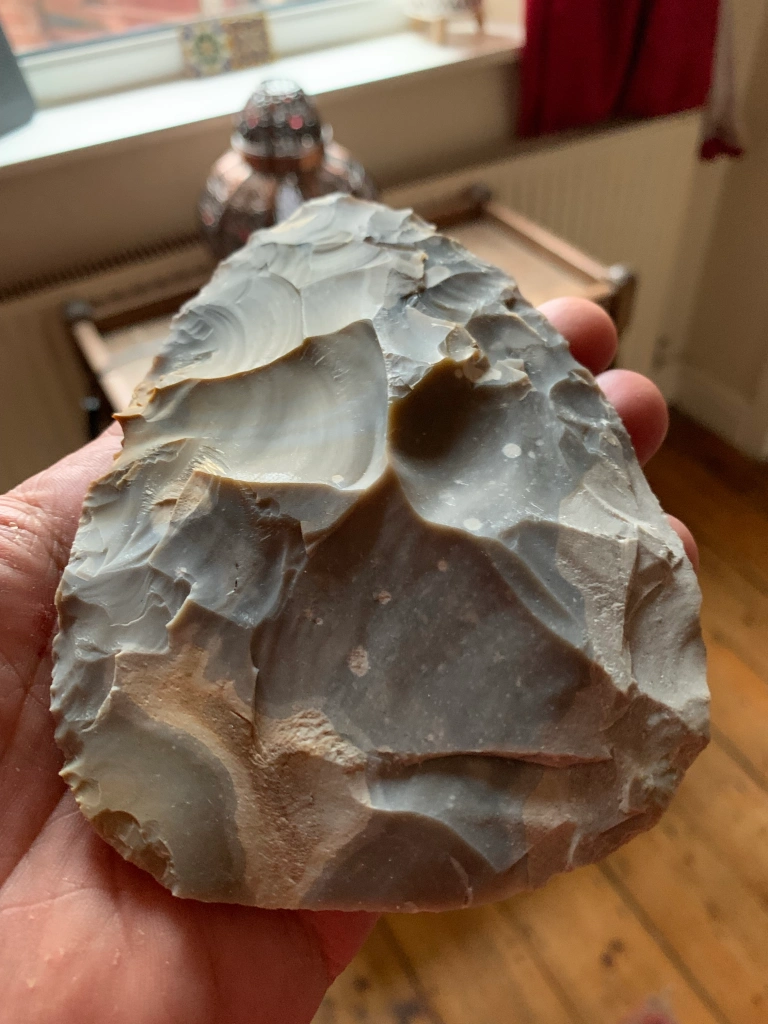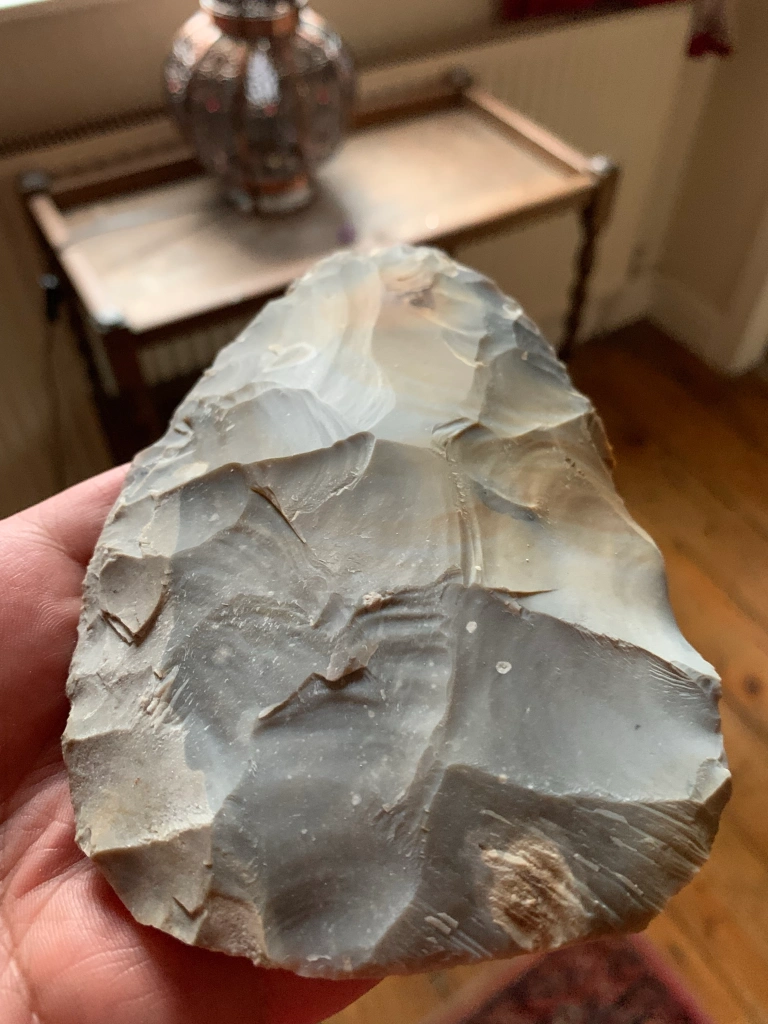As discussed in the previous post Ian brought not one, but two of Mrs Anning’s handaxes to site for me to have a look at. This second handaxe is another amazing example, for both similar and different reasons to the first.
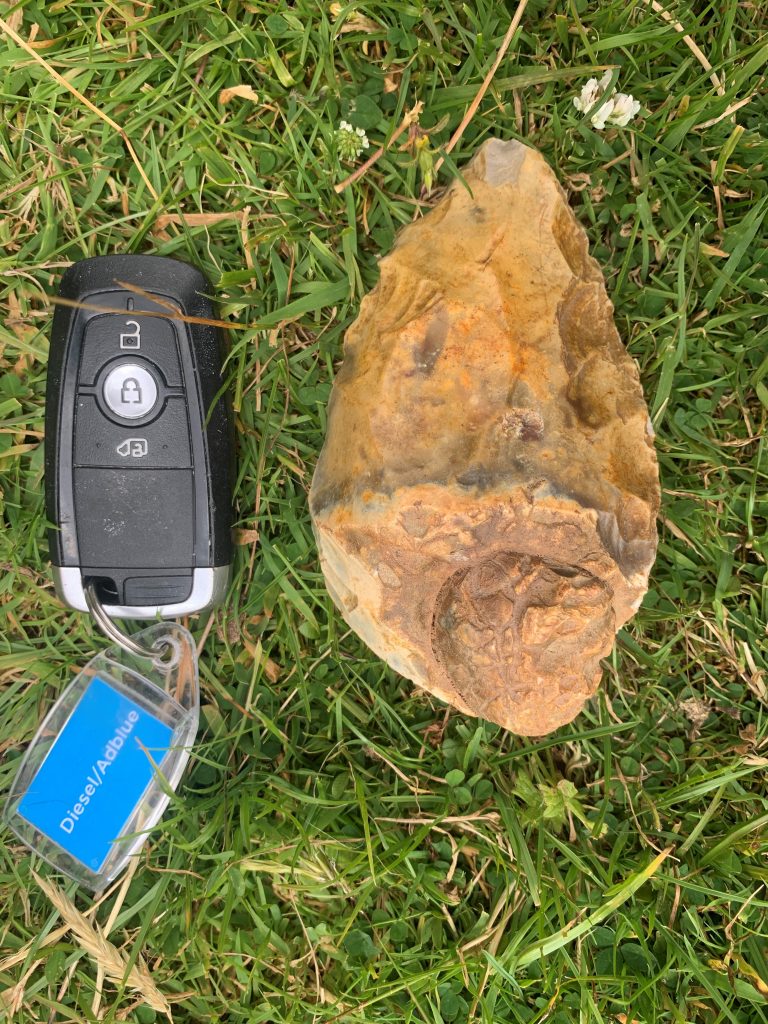
Dealing with ‘similar’ first, you can see from comparing these two photographs that the patina on each surface is different. It looks like the more orange face sat uppermost, whilst the more cream coloured face was face down and protected, for many millennia (my hypothesis).
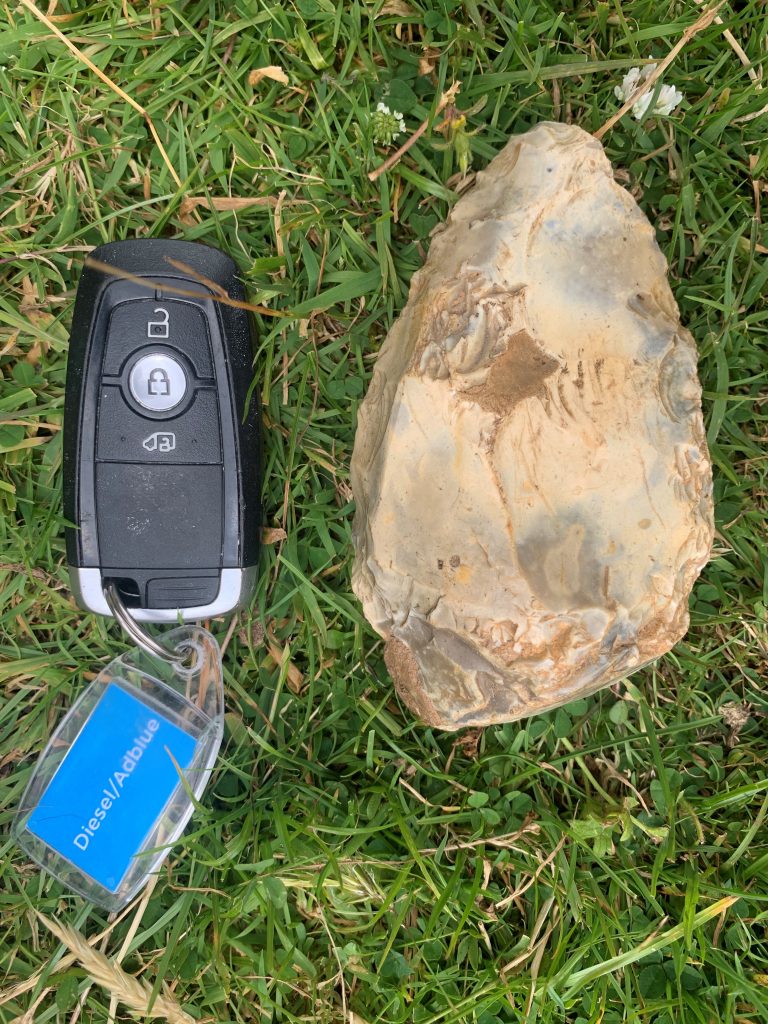
Moving onto different reasons, the echinoderm in the room is the amazing fossil sitting at the top of the photograph below. I sent a picture of it to my Geology friend, Stephen Poole, and he got back to me with the term: echinoderm. A number of well known handaxes have fossil inclusions and this has led to debates about evidence for Palaeolithic aesthetics. The most recent paper I read (Flanders & Kay 2023) argues that with the famous West Tofts example, it was simply left in because it would have been difficult to remove. I have discussed similar in a previous post.
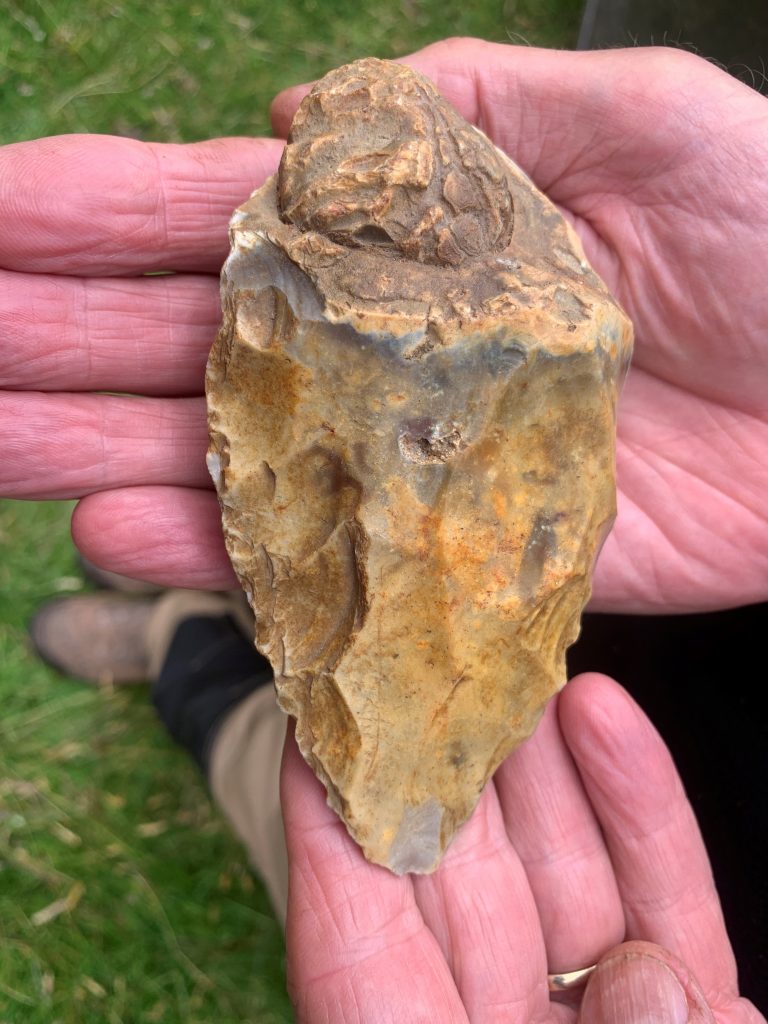
There is a potentially long and interesting discussion on Palaeolithic aesthetics, however I think we first need to speak to Mrs Anning!
Reference: Emily Flanders, Alastair Key, The West Tofts handaxe: A remarkably average, structurally flawed, utilitarian biface, Journal of Archaeological Science,
Volume 160, 2023, 105888, ISSN 0305-4403, https://doi.org/10.1016/j.jas.2023.105888.
